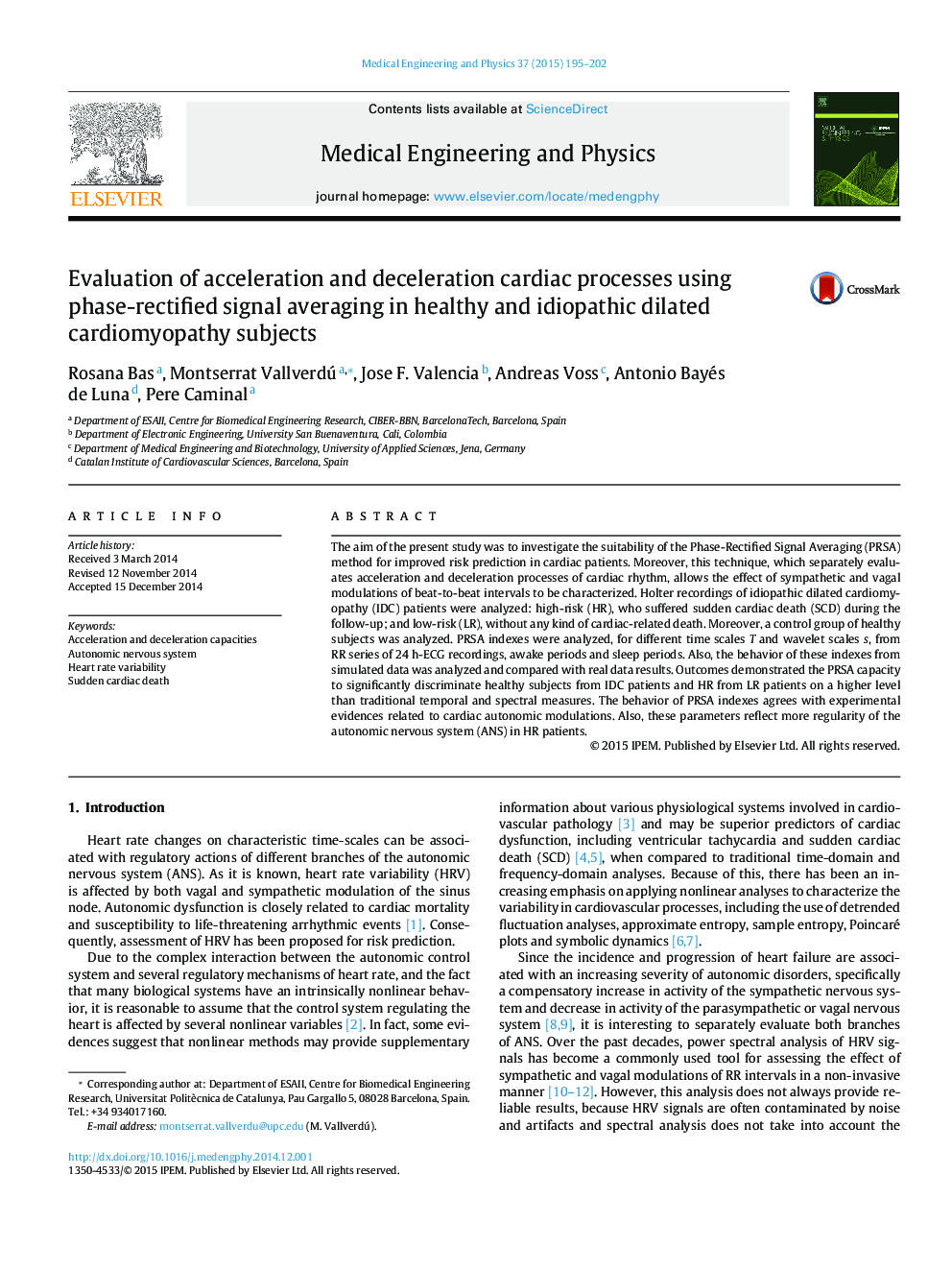| Article ID | Journal | Published Year | Pages | File Type |
|---|---|---|---|---|
| 10435010 | Medical Engineering & Physics | 2015 | 8 Pages |
Abstract
The aim of the present study was to investigate the suitability of the Phase-Rectified Signal Averaging (PRSA) method for improved risk prediction in cardiac patients. Moreover, this technique, which separately evaluates acceleration and deceleration processes of cardiac rhythm, allows the effect of sympathetic and vagal modulations of beat-to-beat intervals to be characterized. Holter recordings of idiopathic dilated cardiomyopathy (IDC) patients were analyzed: high-risk (HR), who suffered sudden cardiac death (SCD) during the follow-up; and low-risk (LR), without any kind of cardiac-related death. Moreover, a control group of healthy subjects was analyzed. PRSA indexes were analyzed, for different time scales T and wavelet scales s, from RR series of 24Â h-ECG recordings, awake periods and sleep periods. Also, the behavior of these indexes from simulated data was analyzed and compared with real data results. Outcomes demonstrated the PRSA capacity to significantly discriminate healthy subjects from IDC patients and HR from LR patients on a higher level than traditional temporal and spectral measures. The behavior of PRSA indexes agrees with experimental evidences related to cardiac autonomic modulations. Also, these parameters reflect more regularity of the autonomic nervous system (ANS) in HR patients.
Related Topics
Physical Sciences and Engineering
Engineering
Biomedical Engineering
Authors
Rosana Bas, Montserrat Vallverdú, Jose F. Valencia, Andreas Voss, Antonio Bayés de Luna, Pere Caminal,
